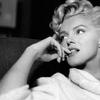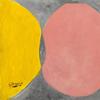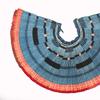Botond Részegh - Weekday Angel at Yi Gallery in Brooklyn
- BROOKLYN, New York
- /
- November 08, 2022
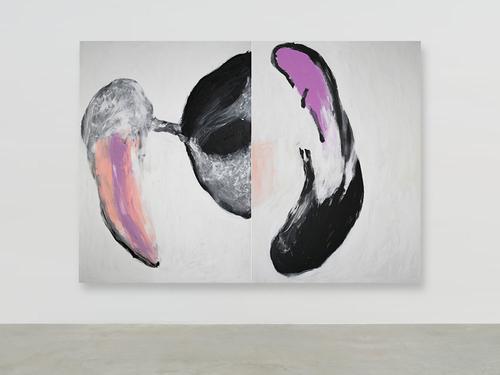
Yi Gallery presents Weekday Angel, Botond Részegh’s first solo exhibition with the Brooklyn-based gallery. This is the Transylvanian artist’s first stateside exhibition since 2015 and brings together paintings and works on paper from the artist’s three best-known series in recent years - Angel, Anatomy of War and Weekdays - highlighting the ongoing themes and concerns of Részegh's work. The exhibition is accompanied by a forthcoming catalog with an essay by internationally renowned artist, critic and art historian, Robert C. Morgan.
Infused with explosive energy and visceral rawness, Részegh’s paintings simultaneously invoke poetry, history, literature, metaphysics and the artist’s own contemporary experience. His pictorial language is distinguished by an idiosyncratic vocabulary of figurative forms and gestural lines. Repeating motifs of solitary figures, anatomical structures and distorted bodies in motion, rendered in bold, rough brushwork, swell with emotion and rigor.
For centuries, theologians, poets and artists have imagined and argued over what angels might look like or whether or not they can be seen at all. The existence of angel-like figures in art can be traced back millennia: from the monumental winged figures Lamassu on Assyrian palaces with the earliest examples dating as far back as the 10th century BC, The Winged Victory of Samothrace (c. 190 BC) - made as an offering to the gods for a sanctuary on the Greek island, the many winged angels found in Byzantine art, to the Baroque period’s sensual, human-like bodies with wings. Executed in 2021, Angel offers an unconventional look at an ancient subject, illustrating Részegh’s elegiac dialogue among mythology, theology and art history. Wing-like forms appear to float and ascend in two tightly connected panels. Pared down to a palette of black and white with fleshy accents of purple and pinkish reds, energized, painterly gestures are brushed in dense layers of acrylic paint. The vastness of white on the right panel strongly conveys a boundlessness and ethereal presence. The diptych format in this series punctuates the picture plane by creating tension and ambiguity, as well as fracturing a continuous sense of time. In several works, Részegh also leaves a small but intentional space between paired canvases, revealing the wall behind. “Részegh's angels are not inhabitants of the mythically overcolored sky, but, rather, powerful forces that are in tension with each other or merge into each other, participating in our created world,” writes Benedek Totth on Részegh's angels in Everyday Angelology (2022). “Could they be us without wings? These lines do not enclose a form - angel or human - but open up the infinite. These beautiful torsos, the aesthetics of everyday life and bodies pressed together, infinite lines entangling and separating…when all that remains is desire - the desire for desire, the body's longing for body, for embrace, to be in each other's palms for a while, to enjoy the illusion of safety and to taste a little of the angelic world - we become angels, leave earth and step onto our planet. Never has desire been so hesitantly endless.”

Works in Anatomy of War are preoccupied with the idea of war and its mechanisms. Részegh started the series in 2018 to explore nonfigurative war depiction, leading to a body of work that represents an increasing distortion of the human form, revealing humans’ vulnerability. This also leads back to the artist’s earlier series, Loss of Soul. In the face of war and atrocity, bodies become extremely fragile and defenseless - sometimes to the point of being weightless and annihilated. Részegh sought to understand how people function and to reevaluate the war, raising fundamental questions about the relation between the mass and the individual: how the masses are sent to battle to kill and to die, how they move and think and how the more powerful forces think for them. “I always imagined a massive crowd going out to fight as a coherent mass,” states Részegh, “a disciplined and enormous thing, moving like an amoeba, which has separate legs, but moves in concert, has a head, but others think and decide for it. This is the phenomenon that I wanted to draw and paint.” At the same time, he considers the individual who, in man-to-man combat, experiences the moment of killing someone or his own death - the winner and the victim. To Részegh, an important aspect of contemporary warfare is the fact that it also takes place in virtual spaces, which accompany the exclusion of a guilty conscience, because one does not have to look directly into the victim’s eye. Anatomically fragmented figures are expressed through thick paint buildup on paper and canvas and raw, painterly gestures. Részegh’s images poignantly depict an individual’s violence and obedience in war and warlike situations and the maddening loneliness one feels inside a crowd: “The loneliness of the winner. The loneliness of the one defeated. Death. Indifference that smells and tastes like steel, or the growing frenzy of guilt leading to madness, which overwhelms people after they take countless lives. These are the ambivalences I want to express.” At the center of Részegh’s work is an isolated human being: a marooned soul, helplessly wandering through a disintegrated landscape who desperately seeks basic necessities for human survival. Részegh pictures a fallible human being who experiences suffering, agony and fear, but can also be portrayed as unique and magnificent. In stark contrast to the lone figures in his other works, Részegh explores togetherness in the ongoing series Weekdays, started during COVID quarantine in 2020, when the artist and his family were confined to a 38 sq meter (410 sq ft) apartment.
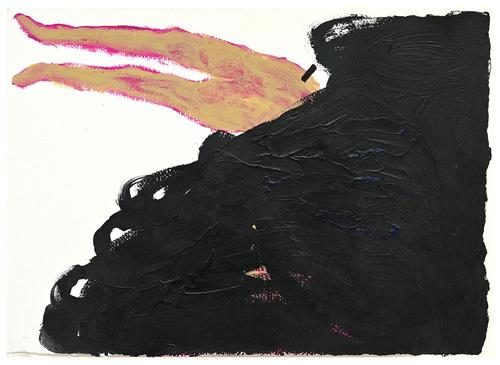
Részegh draws inspiration from literature, art history and philosophy: a wall in his studio is adorned by portraits of influential artists and literary figures, including Fyodor Dostoevsky, Oscar Wilde and Rainer Maria Rilke. While developing an artistic language that is unmistakably contemporary and entirely his own, Részegh grounded himself in the tradition that began with Leonardo Da Vinci and Rembrandt and extended through Francis Bacon, Cy Twombly, Alberto Burri into the spare and expressive figuration by Susan Rothenberg. His engagement with art historical influences is rich and varied. The unostentatious simplicity in Christian Orthodox icon paintings and the meticulousness in ancient Greek vases captivated Részegh’s imagination when he was a graphic arts student at the National University of Fine Arts in Bucharest. Upon a life-defining encounter with Dostoevsky’s novel, The Idiot, Részegh decided to become an artist. An enduring interest in literature naturally became a part of Részegh’s creative process, although there has never been a direct literary transcription in his paintings. Writings by acclaimed contemporary poets and novelists in Romania and Hungary often accompany Részegh’s publications. Viewing Részegh’s arresting work demands time and contemplation. More than simply a reflection of the artist’s inner state of mind, the work asks the viewer to be aware of their own thoughts and to engage freely and imaginatively beneath the tactility of the painted surface.
Born in Romania in 1977, Botond Részegh currently lives and works in Miercurea Ciuc, Romania and Budapest, Hungary. Részegh has exhibited internationally at venues such as the Art Museum Cluj Napoca, The National Museum of Art of Romania, The Museum of Art Timisoara, the Viltin Gallery Budapest, the Hungarian Cultural Institute in Rome and the Romanian Culture Institute in Vienna. His work belongs in the collections of Pope Francis, Northeastern University and the Art Museum of Prahova, among others. Részegh graduated from the National University of Fine Arts in Bucharest, where he specialized in graphic arts. He also attended a doctoral program at the Hungarian University of Fine Arts in Budapest.
YI GALLERY program features an international roster of emerging and mid-career artists. Started in 2018 as a curatorial project exhibiting in non-traditional settings, the gallery has expanded to include a collaborative exhibition space in Bushwick (2020 - 2021). The gallery continues to evolve with a new space, launched in 2021, inside Brooklyn’s vibrant creative hub, Industry City. YI is committed to offering a platform for distinctive artistic voices, while enhancing the public’s interaction with contemporary art.
Contact:
Cecilia Yueyi JalboukhYI GALLERY
9176176561
cecilia@gallery-yi.com
254 36th Street
Building 2, Suite B634 / Buzzer 022
Brooklyn, New York



100x100_c.jpg)
